The content of the article
Pyrei is a plant that is known to each of us, because its habitat is very extensive. In general, creeping wheat grass is considered a weed, from which it is almost impossible to get rid of: the rhizomes can reach up to 3 meters. To remove the plant from the garden, it must be dug out with its roots. What is most interesting - it is the rhizomes of wheat grass in medicine are in great demand, since they have a number of useful properties. Consider the cases in which the wheatgrass root is useful, what are its medicinal properties, and whether there are any contraindications to the use of this medicinal plant.
general information
The rhizome is considered the most valuable in this plant, but the stem does not contain so many nutrients.Many are struggling with this plant in all possible and impossible ways, while not even knowing how much benefit it can bring. Of course, wheat grass absorbs a large amount of minerals from the soil, due to which it is depleted and becomes not so fertile. But do not rush to get rid of the roots of this plant - they can bring a lot of benefit.
For example, Avicenna used wheatgrass in his time - with his help, he treated various eye diseases. In Russia, this plant is also used to treat diseases of the digestive tract, as well as colds.
Traditional healers willingly use the juice extracted from the rhizomes of the plant. It contains a large amount of nutrients:
- vitamins;
- organic acids;
- iron;
- silicic acid.
Wheatgrass rhizomes juice also contains inulin, pectins and various essential oils that have a beneficial effect on the body.
It should be a separate word to say about silicic acid. It is found in rhizomes in large quantities. This trace element plays an important role in the life of the organism, since it is responsible for the assimilation of a large number of chemical elements.
That is why you should not hurry and get rid of the roots of this healing plant. In many cases, if properly prepared, wheatgrass will help get rid of a number of diseases - even if they have already passed into the chronic form. Recipes cooking medicinal decoctions, we will look at later.
How to harvest rhizomes?
To prepare the medicinal collection, the dug roots must be properly shaken off the ground, and then thoroughly washed the rhizomes. Next, the roots laid out on paper, they should be in a well-ventilated area. Sometimes the rhizomes need to be turned over so that they dry out evenly. Some plants are dried and in the dryer, the temperature in this case should be 50-55 ºС.
To find out if the roots are ready, you need to check the roots for bending. If they begin to break during the bending, then everything is ready. You can grind dried raw materials in a coffee grinder, but if you want to keep the rhizomes of wheatgrass - you can do it just in finely chopped form. Dishes for storage - dry, glass jar, tightly cover the lid.
Storage time is 2 years, but it is worth remembering that the longer they are stored, the less useful properties they will contain.
What are the healing properties of rape?
Over the centuries of use, traditional medicine has noted the following beneficial properties of this plant:
- Anti-inflammatory. Can be used for influenza, acute respiratory viral infections, bronchitis, and the common cold. It is also important to drink wheatgrass juice for tuberculosis and pneumonia.
- It has a choleretic effect: it can be taken if a disease such as biliary dyskinesia has been diagnosed.
- It has a powerful anti-inflammatory and analgesic effect. Therefore, they drink with arthritis, in case of nerve pinched, with gout, as well as with rheumatism.
- Due to the diuretic action of the rhizome of the wheatgrass will be useful for people who have impaired renal function, as well as the urinary system.
- It has an enveloping effect, so wheatgrass juice can be taken if a person has gastrointestinal diseases - gastritis, ulcers, etc. It also has a laxative effect, so it can be used if a person suffers from constipation.
- It can be used in diabetes, because the rhizomes of the wheatgrass contain a large amount of inositol - this is the name of a substance that tends to lower blood sugar.
- Wheatgrass will also be useful for people with skin diseases - you can add wheatgrass to baths. Treats furunculosis, diathesis, eczema.
- With chronic colitis, constipation, paraproctitis, enemas can be made with the addition of this plant infusion.
- If a person has been ill for a long time, he needs to restore strength and immunity, to return to work - you can drink the juice of wheatgrass rhizomes, as well as decoctions. In addition, their use will remove toxins from the body, they prevent the development of atherosclerosis, clean the bile ducts.
Composition and indications
Wheatgrass roots contain many useful substances, namely:
- protein;
- carbohydrates;
- pectin;
- saponins;
- glucovalin;
- beneficial trace elements;
- macronutrients;
- carotene;
- starch.
All these substances have a positive effect on the body. That is why it is possible to drink the decoction of the wheat grass even in those cases where a person is not disturbed by anything - to strengthen the body.
Wheatgrass root can be taken by persons who have a need:
- clean the blood;
- speed up tissue repair;
- get rid of insomnia;
- to improve the work of the gastrointestinal tract.
Remove toxins from the body: after poisoning, abuse of drugs or alcohol.
Reduce the level of harmful cholesterol in the blood, which contributes to the emergence of a disease such as atherosclerosis.
What are the contraindications?
As with any medicinal plant, wheatgrass has its own contraindications. You can not take broths and juice of rhizomes with individual intolerance. Do not use this plant for the treatment of pregnant women, as well as young children.
It is also impossible to abuse drugs based on wheatgrass rhizomes! Before you begin treatment, it is imperative to consult with your doctor - he will be able to say for sure whether it is worth resorting to therapy with this plant in a particular case.
What are the recipes?
So, consider how to prepare medicines on the basis of this plant for certain diseases.
- Diuretic. If you suffer from swelling, there are problems with the genitourinary system - in this case, you can get rid of the pathology as follows. To grind a root in the coffee grinder - about 40 grams of the received powder will be necessary for broth. Mix with 100 gr. water (it should be boiled water) and send to languish on a slow fire. After 20 minutes, the remedy is ready - all that remains is to strain it.
- Rheumatism, joint diseases. Mix 40 gr. powder + 1 cup of warm water. The solution is placed in a glass dish and left warm for 12 hours. To get rid of pain, you need to take 1 tbsp. decoction 4 times a day.
- Dermatological diseases. If all sorts of rash on the skin are disturbing, then a special bath solution can be prepared. Wheatgrass root is mixed with burdock in equal proportions. All this fall asleep in a bowl, dilute with water 2k1 and send to fire - the mixture should simmer for 20 minutes. After the solution will need to filter, and add it to the bath. 15 minutes of such baths twice a week will help to forget about skin problems.
- Tuberculosis and other lung diseases. It will take 60 grams of powdered wheat grass powder, add a glass of milk to it.All this is sent to languish on the stove, after boiling the mixture should boil for about 10 more minutes. Stir constantly to keep the milk running. To facilitate your condition, you need to take 100 grams of the mixture 2 times a day.
- Gout Treatment. It is necessary to take a tablespoon of chopped wheatgrass roots, mix with 0.5 liters of water. Pre-boil the water. Mixture infuse 10 hours. After - strain. Take half a cup of the resulting broth 4 times a day.
- Diseases of the digestive tract. Pyrei well helps with diseases such as ulcers, gastritis, gallstone disease. Grind the rhizomes of wheatgrass in a coffee grinder, we need 3 tbsp. Pour 500 liters. water, and simmer on low heat. After that, you will need to remove the decoction from the stove and put in a warm place for 30 minutes. Apply 1 tbsp. infused times a day.
- Malignant neoplasms. In this case, it is worth remembering that taking broths and tinctures will not be enough - you need the skilled help of an oncologist, since the diseases of this plan are very serious. You can ease your condition with the help of rhizome of wheatgrass - you need 40 grams plants and 05 liters of water.Stew for 30 minutes on low heat, then you will need to insist on the decoction (approximately 3 hours). Take half a cup of the mixture 4 times a day.
- SARS, cold. In this case, it will be useful to apply the juice of wheat grass. For its preparation, we need fresh roots, which will need to be crushed with a meat grinder. Squeeze out the resulting juice (for this you can use gauze), mix with an equal amount of boiled water, then boil. The resulting medicine must be taken in an amount of 50 grams daily 5 times.
- Pancreatitis. A serious disease that easily develops into a chronic stage and its owner can bring a lot of trouble. But with this disease can be overcome with the help of wheatgrass. Dry roots - 50 grams + water 1 tbsp. Boil, insist. After the mixture has cooled, it will need to be drained. Take 100 grams. 3 p. / Day.
As you can see, the rhizomes of wheatgrass really have a lot of useful properties, thanks to which you can cure a lot of ailments. Therefore, you should not hurry and throw away the plant - it is quite possible that it will still be useful for useful purposes.
Interesting Facts
- Useful properties of this plant are widely used in modern medicine - with the extract of wheatgrass make various tinctures and ointments. They are designed for a wide range of people: if you need to improve metabolism, improve immunity, prevent spring and autumn diseases of SARS.
- Cats eat wheat grass! Not roots, and stalks. They find this plant and gnaw - this is due to the fact that even the stalks contain a large amount of useful substances.
- In the post-war years, when there was a shortage of food, people made flour from wheat grass, after which they baked bread from it. Due to the fact that this plant has a high nutritional value, people managed to survive difficult years.
Video: healing properties of agrimony


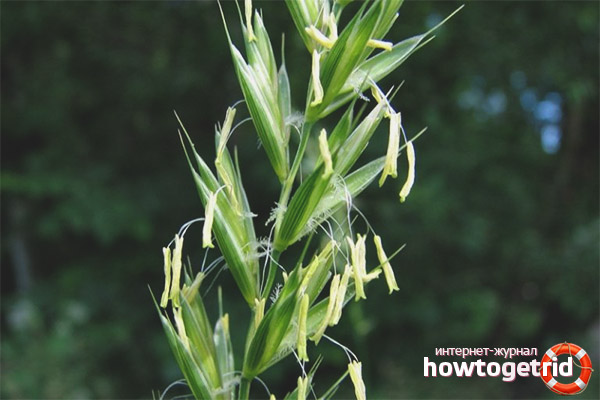



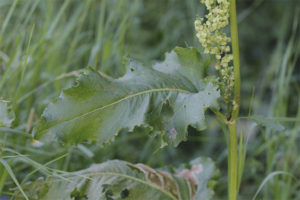
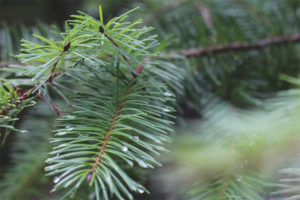


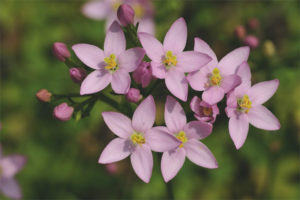
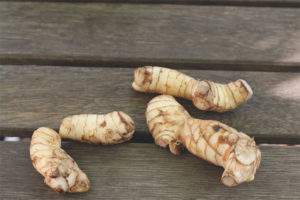
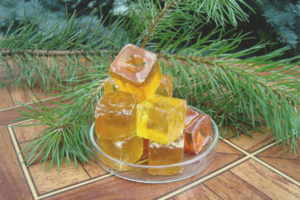
To send